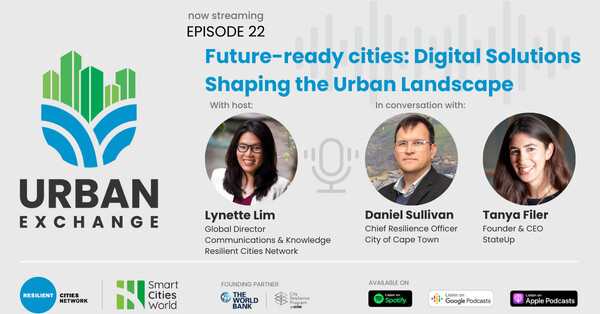Special Reports
SusHi Tech Tokyo 2024: experience ‘Tokyo 2050’ todaySponsored by The SusHi Tech Tokyo 2024 Showcase Program Executive Committee
MaaS: Are cities going to miss the bus?
At a recent roundtable event, city leaders cut through the MaaS hype.

This article is published in partnership with moovel.
With hype around Mobility-as-a-Service (MaaS) remaining high, it’s easy to forget that many crucial questions remain.
This was highlighted at a recent roundtable event held in Eindhoven by SmartCitiesWorld in partnership with moovel (soon to become ReachNow as part of the joint venture between BMW Group and Daimler AG).
Something all of the 15 assembled attendees from cities, regions and the industry were agreed on was that cities have some significant and pressing challenges they need to overcome, such as reducing traffic congestion, cutting air and noise emissions and promoting healthier and more active forms of travel.
MaaS, which brings together the various transportation options in a city – such as public transport, shared bikes, ride-hailing services, on-demand options and more – and allows citizens to plan their route, choose their preferred mode of travel and book and pay for everything via one app, could help cities tackle these issues, but getting there isn’t easy.
It requires close collaboration between cities, mobility providers in the private sector and citizens − not to mention some difficult conversations.
As one public sector transport executive put it to the delegates: “The fundamental question is: Is MaaS actually going to happen, or not?”
Are we there yet?
City leaders noted that behind the scenes, they are still keen but cautious. Many expressed that they want to retain a level of control in the MaaS ecosystem – particularly in areas such as data-sharing and ownership (including getting data back from providers to help with mobility planning), ensuring the promotion of public and sustainable transportation, and limiting the number, placement and types of vehicles in the city.
At the same time, many also said that they are yet to form their MaaS vision, which outlines the role they will play, the processes and policies for governance and how MaaS maps to their city aims. There was broad agreement that such a vision is a basic ‘hygiene factor’ for MaaS.
One city leader said: “We are not ready to move forward with a MaaS platform because we don’t know what we want. We still don’t know what MaaS means for our city.”
One city leader said: “We are not ready to move forward with a MaaS platform because we don’t know what we want. We still don’t know what MaaS means for our city.”
Thomas Friderich, head of business development at moovel, is optimistic that MaaS will become a reality, and soon, but urges cities to act now or risk losing important ground.
“We strongly believe MaaS is going to happen. If it’s not going to happen from the city or the government side, it’s just going to happen in an uncontrolled way,” he said.
Uber recently integrated public transport into its app in London, for example, and could quickly gain a foothold as the go-to MaaS provider given the reach it already has.
Using the right technology and tools, cities can apply the controls they require, Friderich said – for example, blocking motorised traffic from a particular part of the city during specific hours, incentivising walking or routing traffic away from streets that are undergoing maintenance. The technology can automate much of this but cities need to work on the underlying policies.
“You have to look at the platform as a resource − it’s like a field in which to plant things,” he said.
Local flavour
Another concern expressed by public sector attendees was how cities can get what they really want, encompassing their city’s unique qualities and quirks, in MaaS systems which by nature are all about scale.
One delegate noted that, for example, one commercial journey planning app lists a walking journey as 20 minutes, when a local would know it’s actually only two minutes – the app had failed to note the presence of an underpass.
There was a further question about whether mobility providers would be willing to negotiate on an individual basis with cities and, indeed, whether cities themselves have the skills and resources to do this.
Friderich said: “That’s exactly what we do. At moovel, our job is to help you to bring in the ecosystem and the technology so that you can do your job on the government side.”
"We believe we need to work very closely with the city,” he said.”MaaS has to have a local flavour. Amsterdam has canals, which most cities do not have, Stuttgart has hills and stairs which other cities don’t have to that extent so it’s essential to have this partnership.”
One city delegate urged the private sector to better educate the public sector on what’s possible and what is needed from their side to move things faster.
Just start
Cathelijne Hermans, senior strategy advisor, Royal HaskoningDHV and former programme manager for smart mobility, City of Amsterdam, delivered a presentation on her experience with MaaS, urging cities to “just start”.
Her insights highlighted that cities’ unique characteristics don’t have to be at odds with MaaS. There are close to 850,000 residents in Amsterdam, with a further 150,000 expected in the next two decades. Amsterdam’s tourism numbers continue to boom. Further, Amsterdam’s hundreds-of-years-old canal structures are under strain due to heavy traffic.
While Amsterdam has taken a systematic approach and currently has a tender out for mobility pilots, Hermans said: “What I liked about the Amsterdam approach is that we just started doing things on a small scale. We like to do things bottom-up, instead of top-down."
Amsterdam began by asking a small group of citizens to volunteer to give up their cars for six months, switching to “travelling with a budget instead of a vehicle”.
Amsterdam began by asking a small group of citizens to volunteer to give up their cars for six months, switching to “travelling with a budget instead of a vehicle”.
While not everyone gave up their car for good, this provided insight into what drives people’s travel needs and behaviour, and highlighted the importance of involving citizens.
Amsterdam is currently running a pilot with professionals such as school teachers and nurses to understand how to avoid workers being pushed into commuting from outside the city due to housing prices.
This shows the value of having a vision, Hermans said. “Those are the people that we really need to be in the city.”
Amsterdam also ran a pilot in the business district, where employees were challenged to travel with an allocated budget rather than a privately owned car. This was more controversial because workers in this area of the city – typically lawyers and bankers, for instance – have a high income anyway.
However, Hermans noted that different approaches are important – due to roadworks, construction and congestion, accessibility in the business district is a concern. Businesses located here need to attract talented workers.
“We learned that sometimes you need different coalitions to get things moving,” Hermans said.
This might hurt a little
Other cities noted that they, too, are taking steps forward – talking to citizens, trialling ideas and creating tools to ensure private sector solutions are accurate and beneficial to the city.
Delegates highlighted that cities are already starting to assert their rights about who gets to use the public space, and how, and this looks likely to move from voluntary agreements to hard rules.
“I think a lot of cities are getting to the understanding that unless we do that, MaaS is not going to work,” one attendee said.
Ultimately, Hermans said, successful MaaS will be about “finding the balance between individual needs and the needs of society.”
With various stakeholders with differing missions, that is never going to be easy but as one delegate noted, if we are to really make progress: “Maybe it needs to get a bit painful.”
You might also like:
- Download our Trend Report: Mobility as a Service - Cities on the move published in partnership with moovel. It includes MaaS case studies and takeaways from projects in Stuttgart, Karlsruhe, Manchester, Los Angeles and more.
- MaaS: A world without traffic jams?
- Emerging financial models to make MaaS a reality

















